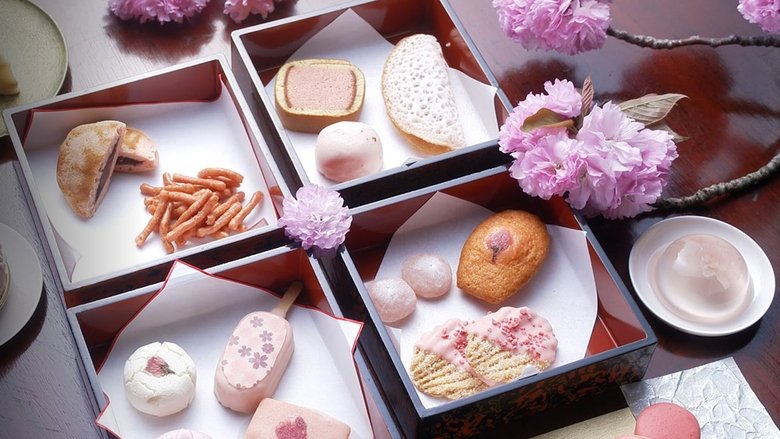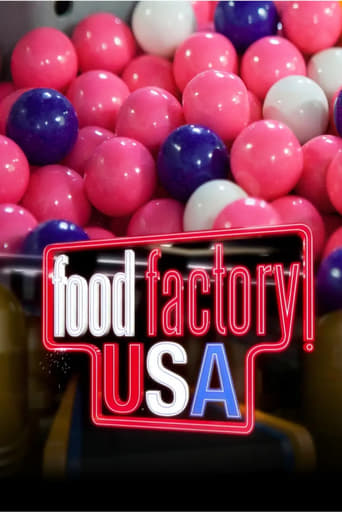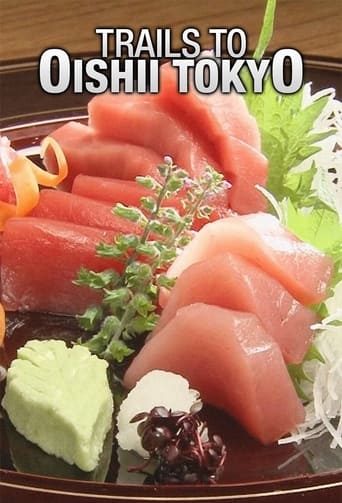
Trailer
Synopsis
Delicious food from Tokyo's markets! Learn about the amazing ingredients which are sourced from across Japan and sold at Tokyo's fresh food markets.
Episode 19 : CUTLASSFISH
December. 31,2020
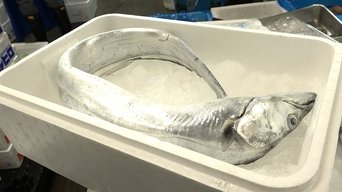
Our focus today is cutlassfish. This shiny samurai sword of the sea has no scales and swims vertically. Our reporter visits the fishing port that receives the largest haul, where 1,000 trailer trolleys and the family members of fishermen eagerly await to race the fish to market. Also, feast your eyes on savory tempura of minced cutlassfish meat containing its bones, curry featuring a 40-centimeter-long deep-fried cutlassfish, and a sushi bento that holds a unique place in Japanese history.
Episode 18 : TOGARASHI PEPPER
December. 17,2020
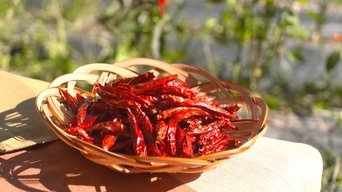
Some 200 varieties of Togarashi peppers are cultivated in Japan, most of which are dried and used as spices. We visited the largest production site to lend a hand in the fiery red fields and discovered special techniques for enhancing pungency and umami. "Super-spicy" foods ranging from snacks to full meals are a recent craze in Japan. Find out more as our reporter stands up to the challenge!
Episode 17 : PEANUTS
December. 10,2020
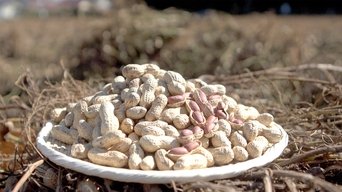
In Japan, peanuts are often eaten as-is, without flavoring or processing. That's because consumers want to taste the peanuts' own sweet, aromatic flavor. This time, we visit Japan's largest peanut production area, Chiba Prefecture, and learn about a traditional, machine-free drying method that gets the most sweetness out of the peanuts. We also sample a variety of local peanut dishes, meet scientists who spend some 15 years perfecting each new variety, and even try peanut ramen!
Episode 16 : WASABI
December. 03,2020
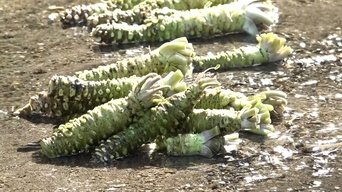
Our focus this time is wasabi, the fiery root that is a pillar of Japanese foods like sushi and sashimi. Visit a traditional wasabi field in Shizuoka Prefecture recognized as one of the world's Globally Important Agricultural Heritage Systems, try futuristic wasabi dishes, and find out why you most likely need a new wasabi grater!
Episode 15 : SESAME
November. 12,2020

Our focus this time is sesame. It's an indispensable part of Japanese cuisine, making the country a leading consumer. Whether used as-is, roasted, ground, or processed into oil, the Japanese have developed numerous ways to enjoy the savory aroma and texture of sesame seeds. They're also a key ingredient in Shojin Ryori, or vegetarian meals prepared for Buddhist monks. Discover the large role that tiny sesame seeds play.
Episode 14 : SATO-IMO
November. 05,2020

Sato-imo, eaten in Japan for some 3,000 years, is a type of taro, a root vegetable that grows in the tropics of Asia. Coming into season in autumn, Sato-imo have been used in sacred rites and other traditional rituals since ages past, and deeply rooted in Japanese culture. We learn how their unique, sticky texture and al dente mouthfeel make them essential for Japanese cuisine. Join us as we take a bite into healthy, low-calorie Sato-imo.
Episode 13 : PEAR
October. 15,2020
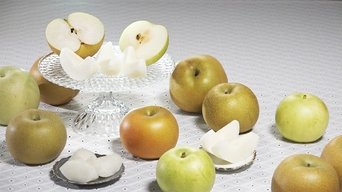
Japanese pears are large, round, juicy and have a great crunch. Chiba Prefecture, which neighbors Tokyo, is known as Japan's largest pear producer. Every autumn, its so-called "Pear Street" fills up with farmers hawking their wares. Those farmers have thought up clever ways to make large, sweet pears, like growing branches across horizontal trellises that match the farmer's height. That lets the pears get plenty of sunlight and makes harvesting easier. Join us as we bite into Japan's world of pears!
Episode 12 : HONEY
October. 08,2020
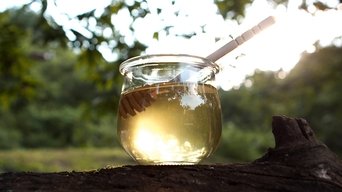
Honey—the world's oldest sweetener. Japan being home to both the Western honey bee and the native honey bee makes for numerous honey varieties. Concerned about the decline in global bee populations, urbanites take on rooftop beekeeping in Japan's capital. Also visit beekeeping sites responsible for precious honey varieties that are increasingly at risk. Fly around and discover infinite flavors born of differing environments and flower varieties.
Episode 11 : SAUCE
September. 23,2020
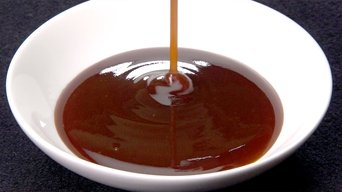
"Sauce." In Japan, this word refers to a rich, dark, bottled sauce sold in a number of varieties. Used on deep-fried foods like pork cutlets and Japanese croquettes, plus savory okonomiyaki pancakes, yakisoba noodles and more, this viscous sauce is an essential part of Japanese comfort cooking. But what is sauce made of? Even many Japanese people don't know! This time, we explore a sauce so essential, it's simply known as "sauce"!
Episode 10 : KAMABOKO
September. 03,2020
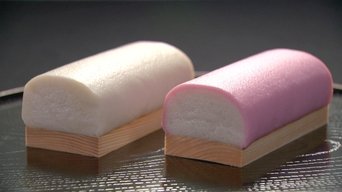
Kamaboko is a traditional type of fish cake made from pureed white fish that can be steamed, grilled or deep-fried. It's available in a variety of shapes, like red-and-white half circles and donut-like cylinders. One form, an alternative to crab meat called "surimi," is especially popular abroad. Packed with protein, it works well in practically any type of cooking. We visit the famous production area of Odawara and learn about the artistry that goes into its distinctive springy texture.
Episode 9 : STRAWBERRIES
May. 14,2020

Japanese strawberries are known for their large size and sweet flavor, and are mainly eaten fresh. We visit Tochigi Prefecture, Japan's largest production site, home to a farm popular with sightseers where you can eat strawberries to your heart's content! We also check out a unique strawberry research center where thousands of strawberries are carefully selected to create brand-new varieties. Plus, we discover some unique strawberry-themed Japanese sweets!
Episode 8 : SHIRAUO
May. 07,2020
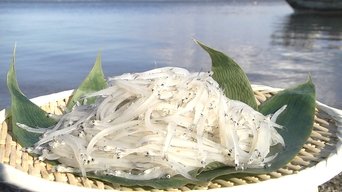
Our focus today is Shirauo, often called noodlefish in English. These beautiful fish have tiny, transparent bodies that grow up to only 10 centimeters long. They are both precious and pricey as the fish can only survive in brackish water conditions where freshwater meets seawater. Fishing for Shirauo symbolizes the coming of spring, their peak season. Visit a lake in the northern prefecture of Aomori to find out more about this mysterious fish.
Episode 7 : MARLIN
April. 22,2020

Our focus today is marlin. These large fish known for their long, sharp bills were once a source of inspiration for the great Ernest Hemingway. Marlin meat is high in fat content and has been the preferred ingredient for "edomae" sushi for centuries. Our reporter takes us marlin fishing and tastes meals commonly eaten by local fishermen. Try marlin "prosciutto" at an Italian restaurant! Dive in to discover the endless possibilities that marlin has to offer.
Episode 6 : BREAD
April. 08,2020

This episode focuses on bread, or "pan" in Japanese. The sheer variety of baked goods in Japan is astounding. Rolls and pastries filled or covered with teriyaki chicken, vegetables, or even stir-fried noodles act as a hearty meal. Bread can also replace rice for sushi, or act as a canvas to your imagination. Discover new ways to enjoy one of the world's oldest man-made foods.
Episode 5 : SHARK
March. 11,2020

Shark meat has been eaten in Japan since ages past. It's often used in old-school Japanese soul foods such as Oden. We visit Aomori Prefecture, where shark is still eaten regularly, to discover traditional methods for catching and consuming shark, including a collagen-rich dish good for the skin and another excellent for overall health. Join us as we dive into the world of sharks in Japan!
Episode 4 : BURI
February. 26,2020
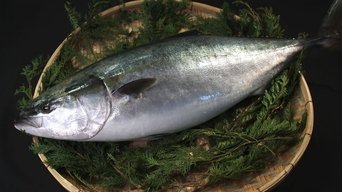
Today we focus on yellowtail, known as Buri in Japanese. Favored in winter when it contains a higher fat content, the fish provides rich umami when grilled, simmered or eaten raw as sushi or sashimi. In western Japan, Buri has long been thought to bring good fortune and is an essential part of the New Year tradition. Visit a Toyama Bay port that is one of the most popular for Buri fishing, and explore Japan's unique Buri culture.
Episode 3 : KOMATSUNA
February. 12,2020
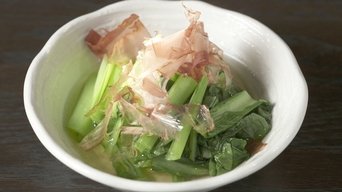
Komatsuna is a spinach-like leaf vegetable from Tokyo that's been grown in the ward of Edogawa, facing Tokyo Bay, for hundreds of years. Even today, Komatsuna is grown in residential areas in Tokyo. There are even vending machines selling freshly-harvested Komatsuna! This time, we dive deep into this special vegetable, sampling classic Japanese cuisine, sweets, noodles and other innovative dishes that feature its unique flavor.
Episode 2 : GINGER
January. 22,2020
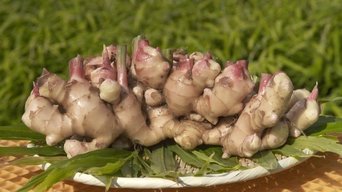
Today we focus on ginger. Often grated, finely chopped or even pickled, ginger is an indispensable ingredient in Japanese cuisine. The pink "gari" eaten with sushi is actually pickled ginger. The spice has become known for its health benefits in recent years, as it improves blood circulation and can even be used as a disinfectant. Let's find out more about the uses of ginger in Japan.
Episode 1 : NOZAWANA
January. 08,2020
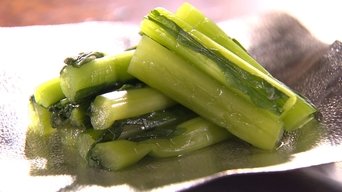
Our focus today is Nozawana, a leaf vegetable indigenous to Japan. This one-meter-long vegetable is often pickled, as it spoils quickly. Nozawana was first grown in Japan in a village 600 meters above sea level. It has long provided snowed-in villages with a precious source of nutrition during harsh winters. Find out more about the vegetable that went from supporting mountain villages to being loved all around Japan.
Seasons
Similar titles

Chef's Table: Pizza
Dig into the best pizzas from around the world, prepared by renowned chefs who bake passion, creativity and hard work into every slice.

Heartland Table
Join Amy Thielen, native Midwesterner, chef and connoisseur of all things authentically Midwestern, in her charming cabin kitchen as she cooks some of the heartland’s most-delicious and often-surprising dishes. She will also take us to meet the locals at their rural homes or restaurants, lakeside kitchens and working farms.

Core Kyoto
The timeless heart of Japan's ancient capital. Against its rich backdrop of culture and tradition, today's Kyoto continues to innovate and inspire.

Nigella: At My Table
Nigella Lawson shows us food we can all bring to our own tables, vibrant and varied but always relaxed.

Saved By The Barn
Dan McKernan relocated from Austin, Texas, to take over his family's 140-year-old farm in Michigan and transform it into the "Barn Sanctuary," a place for farm animals that have experienced abuse, neglect and more; the show follows Dan and his family as they learn the ropes of their new life on the farm and give the barnyard animals a second chance at life; it also documents his travels across the country to rescue barn animals.

Food Factory
Each episode offers a behind-the-scenes view of production lines in food factories across Canada to find out how some of the most-popular food items are really made. Through the ingredients, techniques and required processes, this documentary series reveals how raw ingredients are turned into everyday eats.

Acorn TV
Mary Berry's Country House Secrets
Mary Berry discovers the rich history of Great Britain's greatest stately homes through the prism of food.

How She Rolls
Meet Carrie Morey --an award-winning baker, cookbook author and entrepreneur who is growing a tiny made-by-hand mail order biscuit company into a booming business with a ravenous following.
Top Streaming TV Show
#1

Grey's Anatomy
March. 27,2005
7.6
#2

A Teacher
November. 10,2020
6.9
#3

The Mandalorian
November. 12,2019
8.6
#4

Station 19
March. 22,2018
7
#5

Game of Thrones
April. 17,2011
9.2
#6

The Undoing
October. 25,2020
7.4
#7

Supernatural
September. 13,2005
8.4
#8

The Last Dance
April. 19,2020
9.1
#9

Euphoria
June. 16,2019
8.3
#10

Fear the Walking Dead
August. 23,2015
6.8

